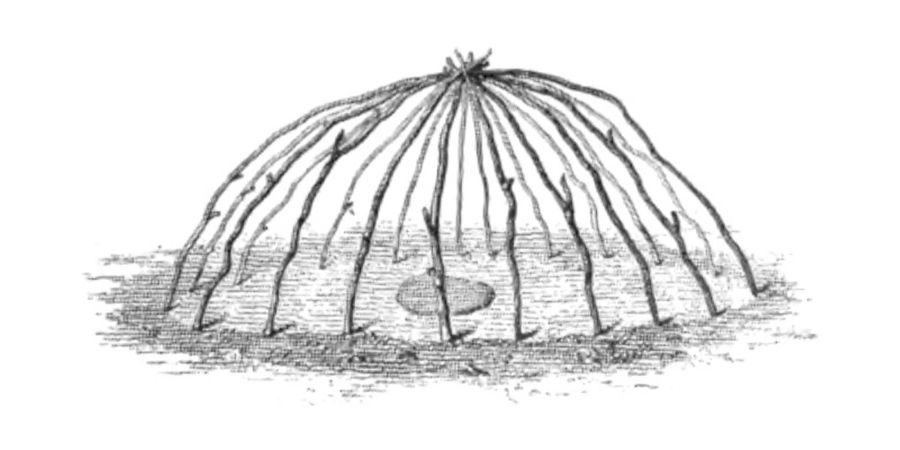
Tribes and Heritage
When exploration of far off lands came into being, many explorers visited Africa and came back with very different stories of how the people there lived and how different their cultures and daily practices were.
Many of these explorers also came back with accounts of the African women being very differently built as compared to the European women and how their body parts were enhanced or changed to a greater degree. Various artists like Heinrich Joseph Klein, Francois le Valliant, John Campbell, John Campbell, Shoemaker, and Gordon came back with very explicit drawings and paintings of the way of life in Africa and the difference in the anatomy of the women there was widely noticed and sparked the interest of many scientists.
This observation was made off the Khoisan women. The Khoisan is a combination of two tribes; the Khoi and the San. These are the natural inhabitants of Southern Africa and have very distinct bodily features that set them apart from the others. This tribe is where Labia Stretching came from.
Expeditions were conducted for them to personally visit these far off lands to view the mystery of the women in Africa and many of them came back with vast knowledge while most came back with confusion. The earlier accounts of the African women actually stretching their labia was very confusion and full of vague details and there so cam a point where people thought that these women had different types of genitals and that’s why seemed different. At that time it was very easy to attribute any type of bodily difference to an abnormality and as this new feature of the body came to light, it was very easy to call it an abnormality and compare it to the likeliness of animal parts. And that is what happened for a very long time and people would gather to watch these dissimilarities and be awed by them. However, even at that time, the pictures and the paintings have a very strong sexual tone and indicate the rising interest of the men in the old manner in which these women expressed their sexuality.
It took a very long time for the world to truly understand that the protruding cloth like structures that these African women had, were actually the genitalia every woman has…they has just enhanced them and had being doing so since a very long time.
Labia stretching came to the world from the Hottentot group that lived around the Cape of Good Hope, around the southern tip of Africa. This was a tribe that may have been related to the Khoi-San or KhoiKhoi that we know today based on the similarities seen in them. Thought his first mention of this practice was made around 1668, the first accurate writing was by Wilhelm ten Rhyne in 1686. Wilhelm was a physician with the Dutch East India Company and he provides a detailed account of the difference he noticed and explicitly mentions the stretched labia of the Hottentot women that he saw. Wilhelm states that he saw a peculiarity that one does not see in the other races and mentioned that their private parts seemed to have finger like appendages hanging from them. At the time, such a practice was never heard of and whoever saw them, struggled to find the right words to describe them and so far, this had proven to be a great hindrance in truly understanding what these men saw. What also helped Wilhelm was that he has a surgeon traveling with him who had the opportunity of dissecting the body of one of the Hottentot women who passed away during their stay. The surgeon friend confirmed that these hanging appendages were nothing other than the labia minora (called ‘Nymphae’ at the time).
Unfortunately this accurate account was lost in the sense of being overlooked for a very long time and various inaccurate descriptions were more prevalent. The most common account was that the Hottentot women let their skin their genitalia and didn’t really need them to cover the tiny bits. There were also pictures of Hottentot women where one could see a semi-circular bit of skin hanging down and covering the external genitalia. This is what gave rise to the word ‘apron’ to refer to the skin that hid the genitals. In 1771, Captain James Cook took the opportunity to explore further while returning home and looked for the answers to questions that were on everybody’s minds…did these women really have fleshy flaps to help them hide their external genitals? Or was it all just a rumor of the travelers trying to add mystery and spice to make their stories of journey exciting?
To help the cause, there was a local physician who mentioned that he had examined many Hottetot women and never seen one with the appendages that were under question. He went on to mention that these appendages could vary in size and shape and he had seen a variety of them. These appendages seemed to hang before the Peudendum and could vary from being half an inch to three to four inches in length.
The first proper investigation of this story was conducted in 1800 via an indirect expedition that was sent out by the French government. It was quite an ill-fated expedition and at the end only two of the zoologists of all that had set out, managed to stay on till the end. These zoologists, Peron and Lesueur, extensively studied the anatomies of these women to truly understand what was going on. Unfortunately, their detailed account was not allowed for publication as it was deemed unfit to tell the public that there was a possibility that something quite resembling a penis could extend from the vulva.
The elongated object that resembled a penis was in fact the extended labia minora and was shaped in a manner to look like a single organ. However, when the woman would lie down and the object pried separate, it would be clear that this was the labia minora and the entire visual was very different. This is what could have been the obstacle in proving the trueness of the practice as it was considered that the sample used by the zoologists was either those of women who were not normal, or they had made some big mistake in their conclusions. A lot of similar work at the time was regarded inconclusive and incorrect and the true answer to the question was once again lost.
The investigation however, had not come to a complete halt. Many women from these tribes had started showing up in the more civilized parts of the world due to slavery becoming more and more demanded. One of the most important people who helped understand the true practice in the African cultures was the Hottentot Venus who at the time also happened to come to civilization and was explored to find the answers that couldn’t be answered before.
East-Central Africa
Even though we know that the beginning of labia stretching came into being in Africa, there are strong accounts of deep roots of this practice in the African culture. The first truth to know about the earlier African culture is that here, sexuality was not considered forbidden and was treated as another aspect of life. It was in fact this open expression of sexuality in the African cultures that kept them at cultural loggerheads with the European cultures. In fact the Europeans would consider the Africans as very primitive primarily because of their open outlook towards sexuality. In fact many of the aspects of women that are exploited today and used to undermine them, were considered as agents of power for the women ask then. For example, a woman had her own sexual choices to make and none could even be forced on her. A woman’s menstruation was also considered a great power and the days that the women in African tribes would menstruate, all they were to do was sit and relax and enjoy themselves. Such was their power and the difference of considering sexuality back then. One of the indicators of the social strength of women back then was the concept of labia stretching which was the process of growing the vagina.
The origination of labia stretching however. May have been earlier than has been understood. It has been seen that the practice was not just conducted by the Botatwe and Sabi people but also amongst the Mwika and Nyasa as well. This practice was also noticed in the Kasai region, the Ganda and the Gisu and even the Venda of the northern South Africa.
The practice has also been noticed in the Central Savanna people of the Eastern Savanna Bantu, in the central Savanna people, and even in the western Luba. In the Yao of northern Mozambique, the Malawi of the northern lake, the central Sabi people and the other tribes also practiced the same art however it cannot be determined if all of these were interconnected or happened to come up with the same practice. It can also not be determined which tribe influenced which one because they were all widespread and it is not very clear which tribes came up with which rituals before the others.
This is still not the complete account of how widespread the practice was since even the tribes of Kalahari and Khoisan to the south of East Central Africa were practicing it In fact it was from here that the first woman with stretched labia was brought out to the world. Evidence does suggest that the origination of this custom was in the hunting and gathering African tribes in southern and East Central Africa and the custom then expanded to the other tribes.














